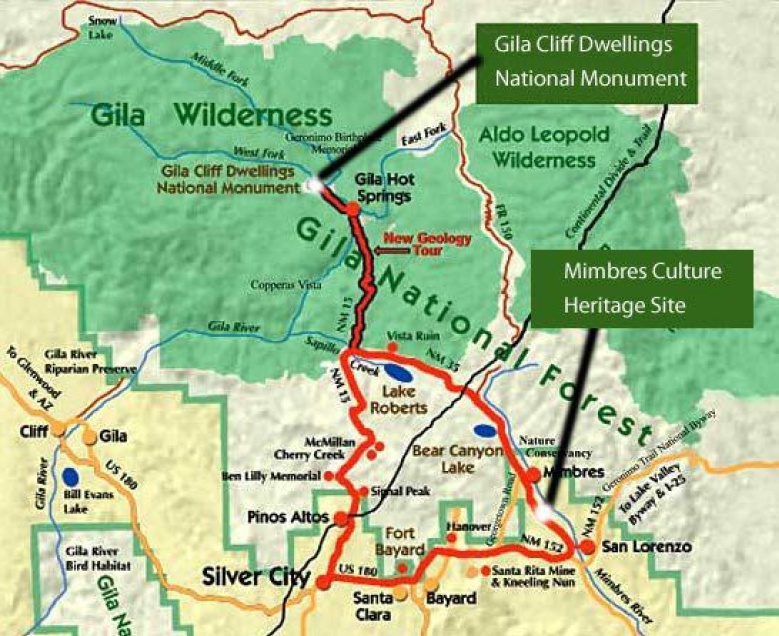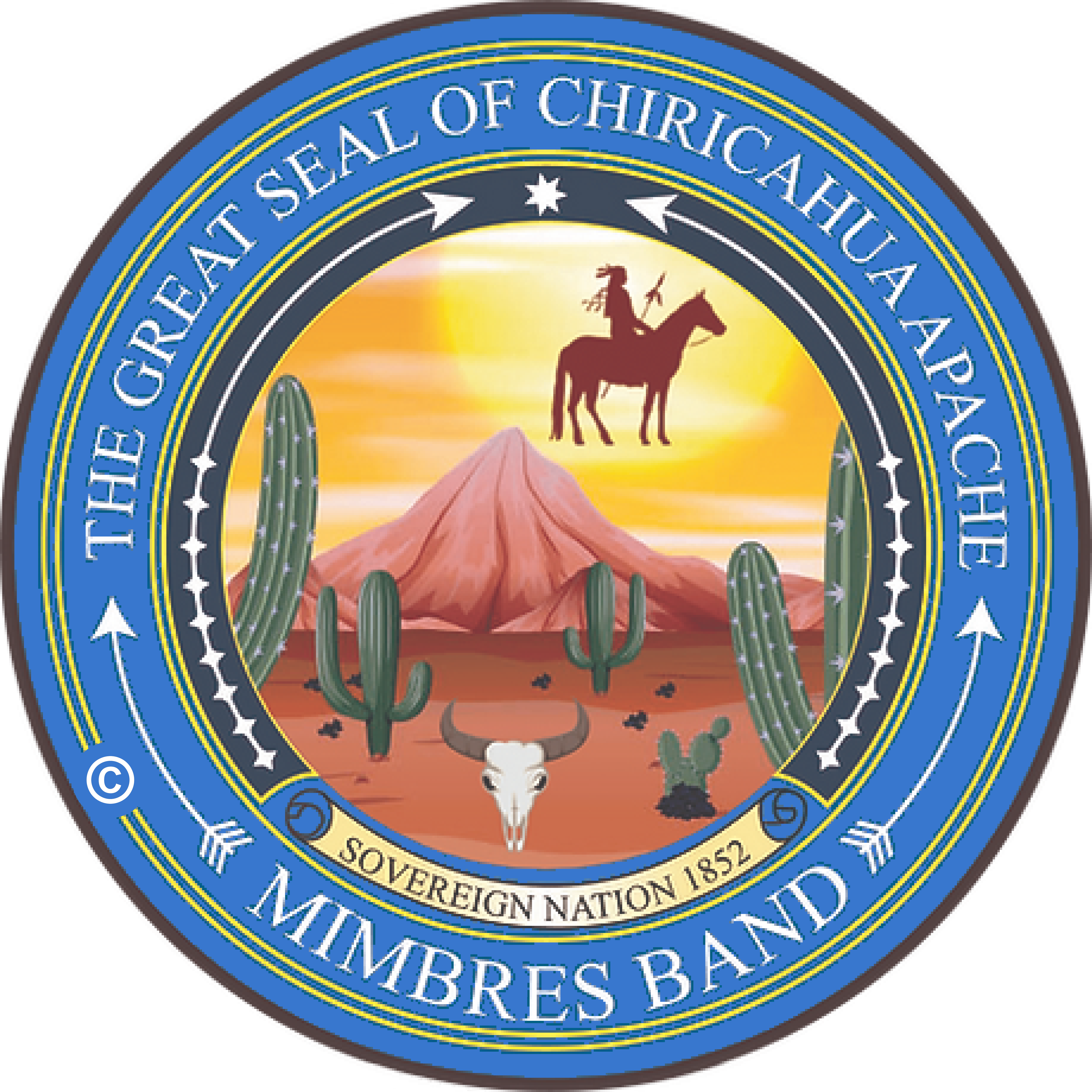About The Chiricahua Apache Mimbres Band
We are a Sovereign U.S. Federal Treaty Recognized Nation who entered into Treaties with the United States Of America and Mexico.
- Treaty with the Apaches, Santa Fe, 1852
- Treaty with the Comanche, Kiowa, and Apache, 1853
- Treaty with the Apache, Cheyenne, and Arapaho, 1865
- Treaty with the Kiowa, Comanche, and Apache, 1867
- Cochise-Howard Peace Treaty, 1872
- Executive Order 1872 Signed by President Ulysses S. Grant
- Mexico Treaty With The Mimbres Bands of Apache, November 15, 1838
- Treaty With Mexico And The Mimbres Bands of Apache 1838 Addendum
- Apache Treaties With Mexico, Chihuahua, Sonora
- Chiricahua Apache Treaty With Sonora, Mexico

Chiricahua Apache Mimbres Culture
Traditional Apache Songs
- A Tribute To Geronimo (coming soon)
- Apache Prayer Song (coming soon)
- Apache Creation Song (coming soon)
- Dishchii Bikoh Apache Group (coming soon)

The Chiricahua Apache Mimbres People History
The Chiricahua Apache Mimbres Band is one of the socio-culturally related Native American tribes in the Southwestern United States, which include the Tsokanende (Chiricahua), Ndendahe (Mogollon, Carrizaleño), Tchihende (Mimbreño), Sehende (Mescalero), Lipan, Salinero, Plains and Western Apache, historically based in the Southern Plains and Southwest United States in Arizona, New Mexico, between the Mimbres River and the Rio Grande up in the Mimbres Mountains and the Cook's Range, Oklahoma, California NE Sonora and NW Chihuahua Mexico. We are closely related to the Chiricahua Apache Warm Springs Band.
The Chiricahua Apache Mimbres Apaches historical Tribal chiefs were Juan José Compa, Fuerte also known as Soldado Fiero, Mangas Coloradas, Cuchillo Negro, Delgadito, Ponce, Nana, Victorio, Loco.
Chihenne, Chihende or Tchihende (also known as Chi-he-nde, Tci-he-nde, Chíhéne, Chííhénee, Chiende - 'Red Painted People', could relate to the mineral red coloration of the copper-containing tribal area, often called Copper Mine, Ojo Caliente / Warm Springs (The vicinity of a southern New Mexico hot spring known as Ojo Caliente (Spanish for Hot Spring).
What Is The Language Of The Chiricahua Apache Mimbres Band?
Western Apache is an Athabaskan (Na-Dene) language of the American Southwest, particularly Arizona, New Mexico, and Texas. Actually, there are at least two distinct Apache languages: Western Apache and Eastern Apache. The language of the Mimbres Apaches is Western Apache.
Misunderstanding Of The Apaches U.S. And Mexico Relations.
For a more accurate historical correction and perception, The Apaches were not always the aggressors and in many cases were provoked first of which they mightily responded. Although they had lived peaceably with most Americans in the New Mexico Territory up to about 1860, the Chiricahua became increasingly hostile to American encroachment in the Southwest after a number of provocations had occurred between them.
In 1835, Mexico had placed a bounty on Apache scalps which further inflamed the situation. In 1837 Warm Springs Mimbres head chief and famed raider, Soldado Fiero also known as Fuerte was killed by Mexican soldiers of the garrison at Janos (only two days' travel from Santa Rita del Cobre), and his son Cuchillo Negro succeeded him as head chief and went to war against Chihuahua for revenge.
In the same 1837, the American John (also known as James) Johnson invited the Coppermine Mimbreños in the Pinos Altos area to trade with his party (near the mines at Santa Rita del Cobre, New Mexico) and, when they gathered around a blanket on which pinole (a ground corn flour) had been placed for them, Johnson and his men opened fire on the Chihenne with rifles and a concealed cannon loaded with scrap iron, glass, and a length of chain.
They killed about 20 Apache, including the chief Juan José Compá. Mangas Coloradas is said to have witnessed this attack, which inflamed his and other Apache warriors' desires for vengeance for many years; he led the survivors to safety and subsequently, together with Cuchillo Negro, took Mimbreño revenge.
The historian Rex W. Strickland argued that the Apache had come to the meeting with their own intentions of attacking Johnson's party, but were taken by surprise. In 1839 scalp-hunter James Kirker was employed by Robert McKnight to re-open the road to Santa Rita del Cobre.
After the conclusion of the US/Mexican War (1848) and the Gadsden Purchase (1853), Americans began to enter the territory in greater numbers. This increased the opportunities for incidents and misunderstandings.
Anyway, the Apaches, including Mangas Coloradas and Cuchillo Negro, were not at first hostile to the Americans, considering them enemies of their own Mexican enemies.
Apache Historical Relations With The United States.
Cuchillo Negro, with Ponce, Delgadito, Victorio and other Mimbreño chiefs, signed a treaty at Fort Webster in April 1853, but, during the spring of 1857 the U.S. Army set out on a campaign, led by Col. Benjamin L.E. deBonneville, Col. Dixon S. Miles (3rd Cavalry from Fort Thorn) and Col. William W. Loring (commanding a Mounted Rifles Regiment from Albuquerque), against Mogollon and Coyotero Apaches: Loring's Pueblo Indian scouts found out and attacked an Apache rancheria in the Canyon de Los Muertos Carneros (May 25, 1857), where Cuchillo Negro and some Mimbreño Apache were resting after a raid against the Navahos. Some Apaches, including Cuchillo Negro himself, were killed.
In December 1860, after several bad incidents provoked by the miners led by James H. Tevis in the Pinos Altos area, Mangas Coloradas went to Pinos Altos, New Mexico to try to convince the miners to move away from the area he loved and to go to the Sierra Madre and seek gold there, but they tied him to a tree and whipped him badly.
His Mimbres and Ndendahe followers and related Chiricahua bands were incensed by the treatment of their respected chief. Mangas had been just as great a chief in his prime (during the 1830s and 1840s), along with Cuchillo Negro, as Cochise was then becoming.
In 1861, the US Army seized and killed some of Cochise's relatives near Apache Pass, in what became known as the Bascom Affair. Remembering how Cochise had escaped, the Chiricahua called the incident "cut the tent." In 1863, Gen. James H. Carleton set out leading a new campaign against the Mescalero Apache, and Capt. Edmund Shirland (10th California Cavalry) invited Mangas Coloradas for a "parley" but, after he entered the U.S. camp to negotiate a peace, the great Mimbres chief was arrested and convicted in Fort McLane, where, probably on Gen. Joseph R. West's orders.
Mangas Coloradas was killed by American soldiers (Jan. 18, 1863). His body was mutilated by the soldiers, and his people were enraged by his murder. The Chiricahuas began to consider the Americans as "enemies we go against them." From that time, they waged almost constant war against US settlers and the Army for the next 23 years.
Cochise, his brother-in-law Nahilzay (war chief of Cochise's people), Chihuahua, Skinya, Pionsenay, Ulzana and other warring chiefs became a nightmare to settlers and military garrisons and patrols. In the meantime, the great Victorio, Delgadito (soon killed in 1864), Nana, Loco, young Mangus (last son of Mangas Coloradas) and other minor chiefs led on the warpath the Mimbreños, Chiricahuas' cousins and allies, and Juh led the Ndendahe (Nednhi and Bedonkohe together).
In 1872, General Oliver O. Howard, with the help of Thomas Jeffords, succeeded in negotiating a peace with Cochise. The US established a Chiricahua Apache Reservation with Jeffords as US Agent, near Fort Bowie, Arizona Territory. It remained open for about 4 years, during which the chief Cochise died (from natural causes).
In 1876, about two years after Cochise's death, the US moved the Chiricahua and some other Apache bands to the San Carlos Apache Indian Reservation, still in Arizona. This was in response to public outcry after the killings of Orizoba Spence and Nicholas Rogers at Sulpher Springs. The mountain people hated the desert environment of San Carlos, and some frequently began to leave the reservation and sometimes raided neighboring settlers.
They surrendered to General Nelson Miles in 1886. The best-known warrior leader of the "renegades", although he was not considered a 'chief', was the forceful and influential Geronimo. He and Naiche (the son of Cochise and hereditary leader after Tahzay's death) together led many of the resisters during those last few years of freedom.
The Chiricahua Apache Mimbres People Today.
The Chiricahua Apache Mimbres people today are among many Apache tribes still persevering to regain a foothold in its historical territory around Silver City, N.M. and other areas of Arizona, New Mexico and mostly Sonora, Mexico.
It's a gloriously rugged landscape, with abysses almost as deep as the Grand Canyon, ponderosa-covered plateaus, mountain ranges reaching nearly 11,000 feet, the fertile Gila, San Francisco and Mimbres river valleys and some of North America's highest concentrations of hot springs.
As righteous, and long-overdue, as this effort to correct a historic wrong may appear, it has stirred up a stunning amount of controversy between the descendants and the state of New Mexico, but also between other bands who claim their ancestral rights..
SPEAK APACHE:
Learn To Speak Western Apache Language.
Instructional Teachings, Pronounciations, Flash Cards, Syllables.

